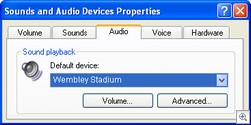How-to: Repair a VHS tape
 VHS tapes are not used as much as they used to be since the development of newer formats such as DVD’s, but many people still have them in their homes as they were often used to store family memories.
VHS tapes are not used as much as they used to be since the development of newer formats such as DVD’s, but many people still have them in their homes as they were often used to store family memories.
The Video Home System (VHS < who would of guessed) is still a very useful format. Many Radio stations use VHS for their pre recorded shows and the majority of recording studios which haven’t gone to hard drive recordings, still use S-VHS format to record their musicians.
The drawback of VHS is that the tapes can stick or break altogether. Sadly, this happens to the most watched videos, which you probably want to see again.
This article will look at how to repair a video. With the help of images in this article, you will be able to dissect one and put it back together. I wrote this article after repairing a video from when I was on TV at the age of 5, which I will finally be able to show my wife. The video has not been playable for many years.



 There are many ways to replicate a signal across multiple monitors. Some methods work much better than others. The price difference varies greatly as well. The more money you spend, the more control you will have and the better your results will be.
There are many ways to replicate a signal across multiple monitors. Some methods work much better than others. The price difference varies greatly as well. The more money you spend, the more control you will have and the better your results will be.
